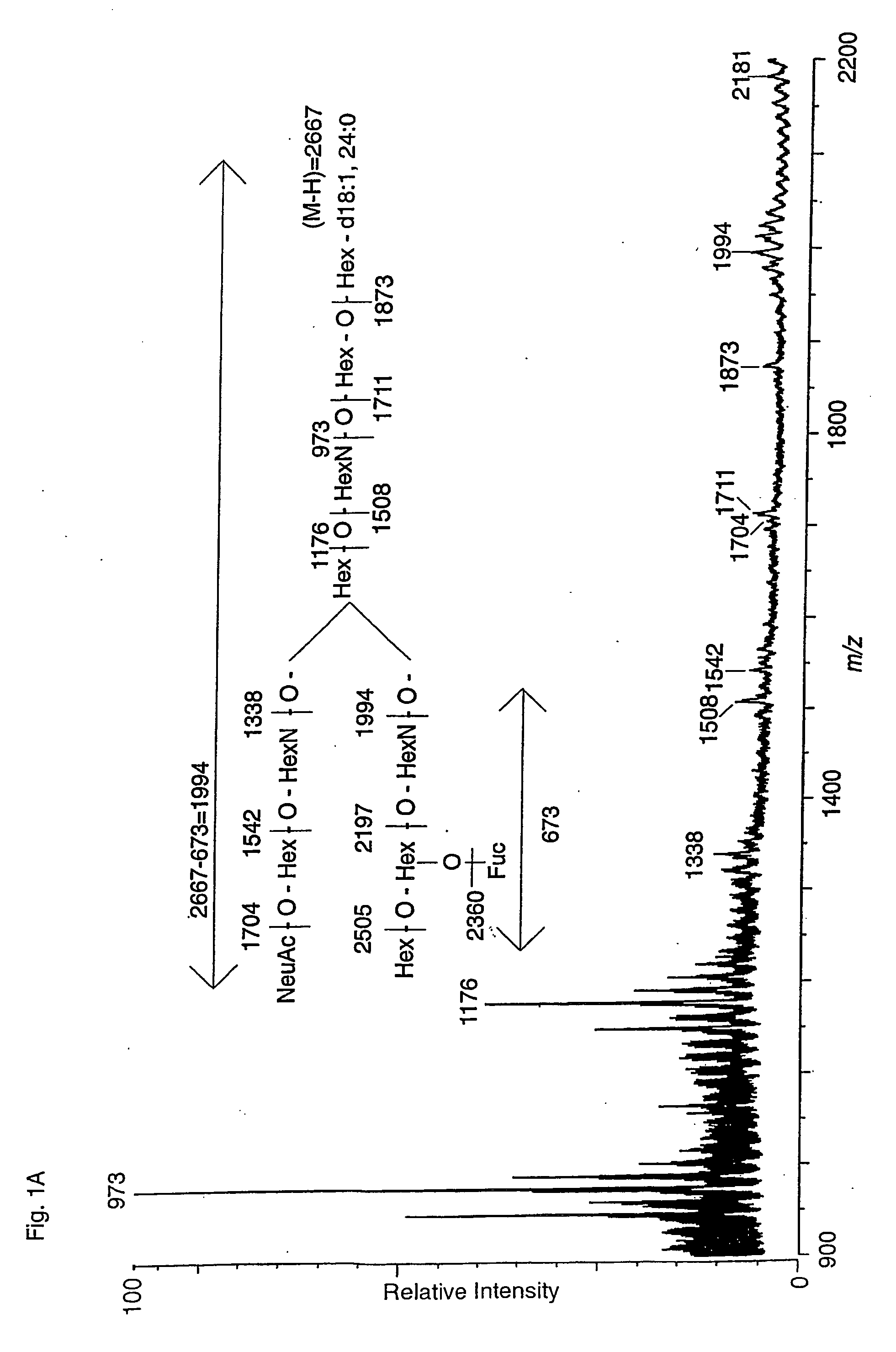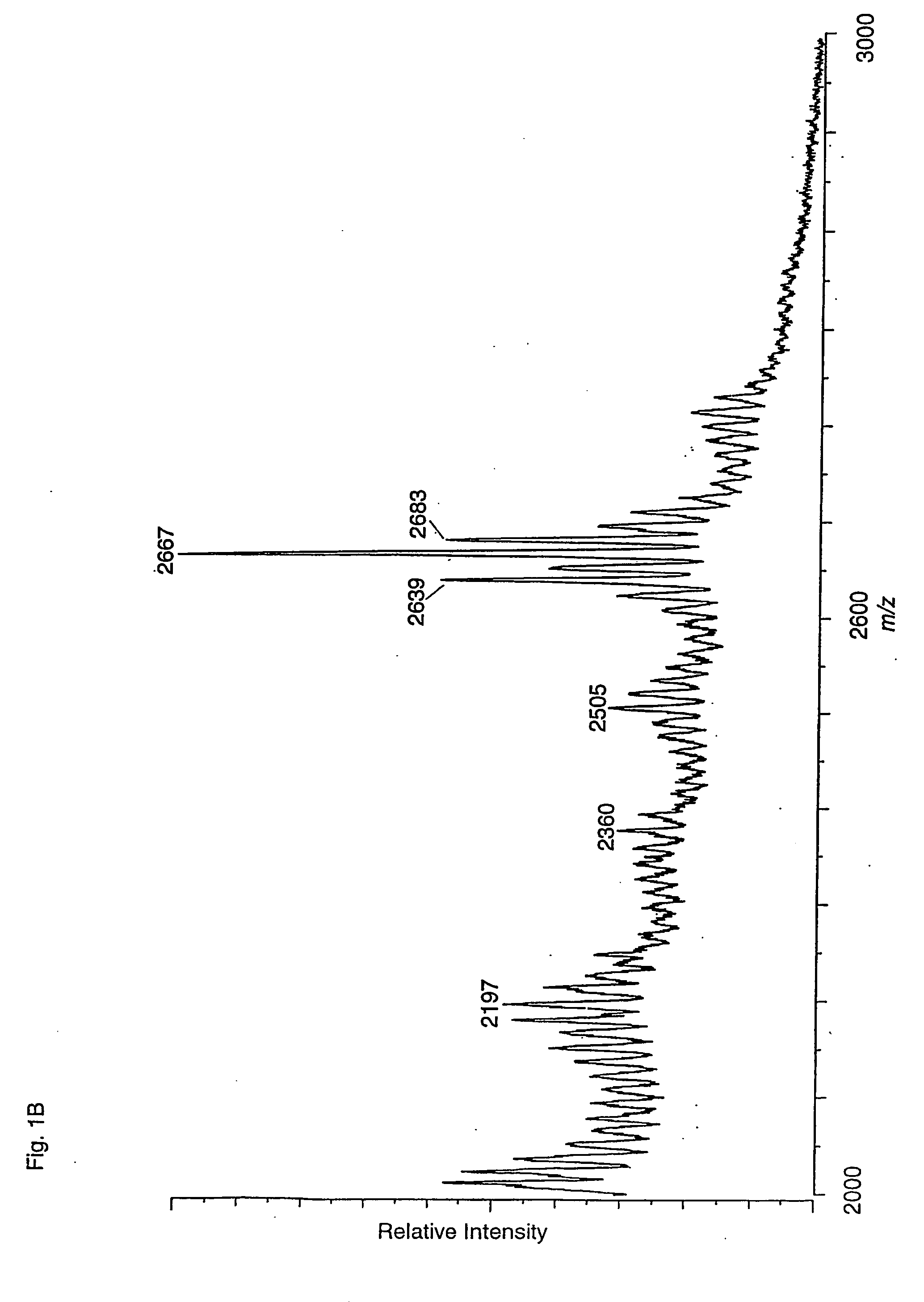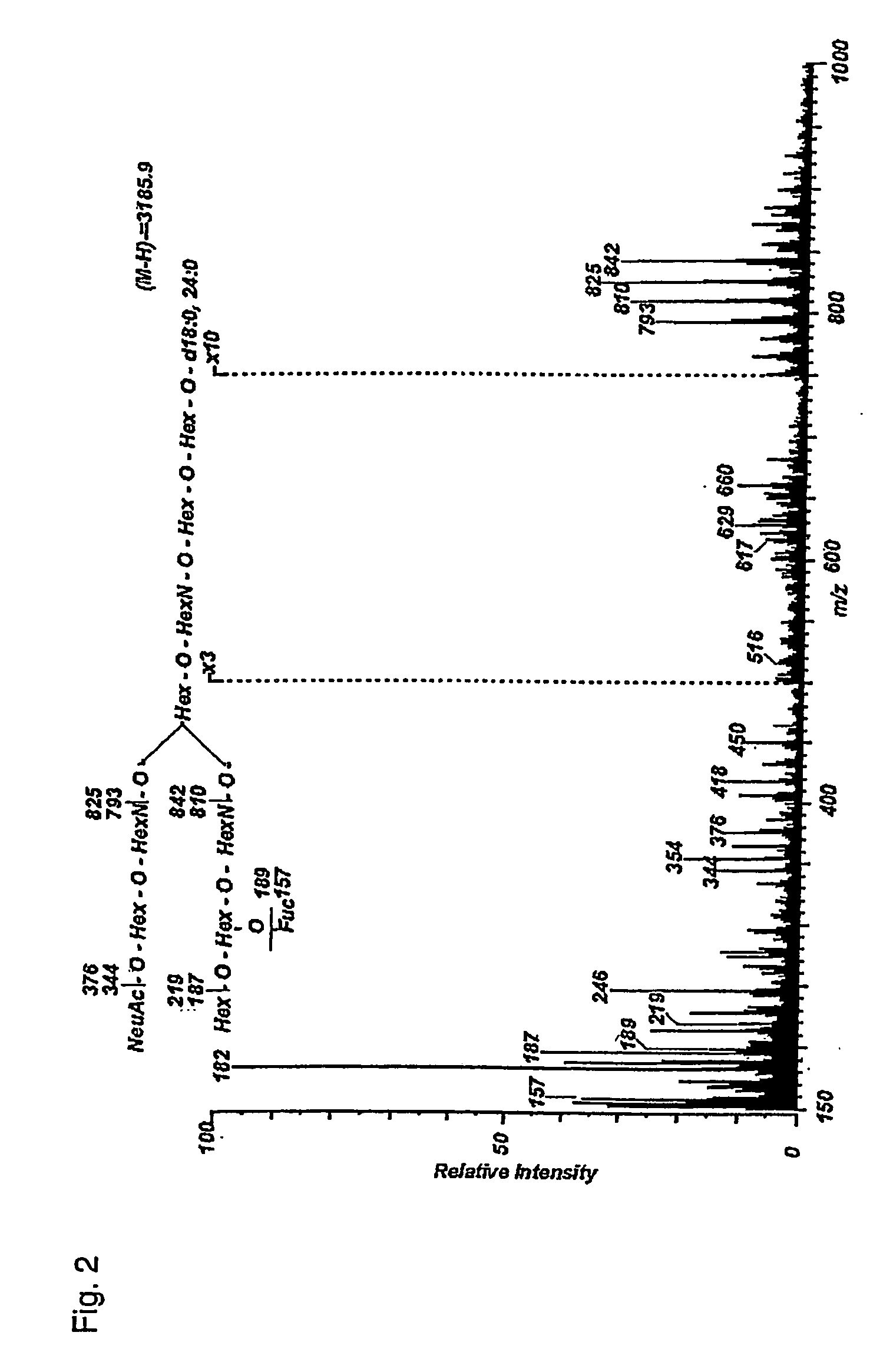High affinity receptors for helicobacter pylori and use thereof
a technology of helicobacter pylori and receptors, which is applied in the field of high affinity receptors for helicobacter pylori, can solve the problems of industrially difficult addition of fucose, and achieve the effect of improving the affinity of helicobacter pylori and its affinity
- Summary
- Abstract
- Description
- Claims
- Application Information
AI Technical Summary
Benefits of technology
Problems solved by technology
Method used
Image
Examples
Embodiment Construction
[0027] The present invention shows that several linear and branched NeuNAcα3-poly-N-acetyllactosamine structures can serve as high affinity ligands for Helicobacter pylori. The binding is specific for NeuNAcα3 linked to the type lactosamine Galβ4GlcNAc. The present invention is directed to larger polylactosamines having higher binding activity than the terminal trisaccharide epitope. When considering the linear polylactosamine structures NeuNAcα3Galβ4GlcNAcβ3Galβ4GlcNAcβ3Galβ4GlcβCer and NeuNAcα3Galβ4GlcNAcβ3Galβ4GlcNAcβ3Galβ4GlcNAcβ3Galβ4GlcβCer it is clear that the presentation of the terminal NeuNAcα3Galβ4GlcNAc is effective on β3Galβ4GlcNAc and larger polylactosamine β3Galβ4GlcNAcβ3Galβ4GlcNAc. The results also indicate that the terminal structure β3-linked on Gal or lactose are useful minimal epitopes.
General Formula of Novel High Affinity Inhibitors of H. pylori
[0028] The present invention is specifically directed to high affinity Helicobacter pylori binding oligosaccharide...
PUM
| Property | Measurement | Unit |
|---|---|---|
| acceleration voltage | aaaaa | aaaaa |
| acceleration voltage | aaaaa | aaaaa |
| molecular weight | aaaaa | aaaaa |
Abstract
Description
Claims
Application Information
 Login to View More
Login to View More - R&D
- Intellectual Property
- Life Sciences
- Materials
- Tech Scout
- Unparalleled Data Quality
- Higher Quality Content
- 60% Fewer Hallucinations
Browse by: Latest US Patents, China's latest patents, Technical Efficacy Thesaurus, Application Domain, Technology Topic, Popular Technical Reports.
© 2025 PatSnap. All rights reserved.Legal|Privacy policy|Modern Slavery Act Transparency Statement|Sitemap|About US| Contact US: help@patsnap.com



